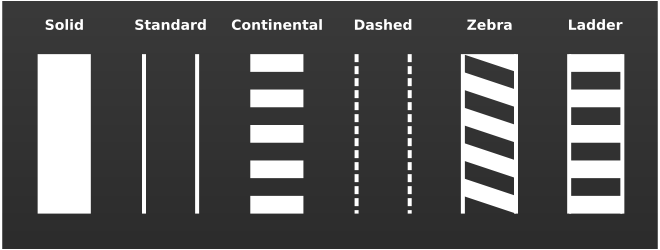My ride to work from New Haven to Wallingford is a little under 18 miles long. I could make it in 14.5 miles, but that would mean riding straight up the Hartford Turnpike, which is safe enough for about half of the ride, but means riding in heavy-ish traffic on a two lane road with no shoulder for the other half. I choose not to take that route unless I'm running late. With me, safety is my top priority.
For this reason, I take a less direct route that puts me on a bike trail for the first 9-10 miles, then a back road for a couple of more before dealing with traffic for a bit. I then again leave the direct route to ride through a suburban neighborhood before once again joining a main road for the last dash to the office. (Unfortunately, the office is located in a business park which isn't even pedestrian friendly, let alone bicycle friendly.)
Here's a map of the route. (The big pushpins are put there by the app I use on my phone to track my progress. Feel free to ignore them.)
I am very careful when riding in the traffic-heavy parts of the route to follow all laws, including waiting for traffic lights and not going straight through from a right-turn only lane--it's not only the law; it's the safest way to ride. I also wear one of those day-glow yellow jerseys while commuting to be extra-special sure that drivers can see me without difficulty.
I tell you all of this so you'll understand the surprise I felt when the following happened while I was riding to work sometime last week.
All went very well on that morning's ride. It was a beautiful morning, the ride along the trail was very pleasant, and I was even noting that most of the drivers were treating me with more respect that is frequently the case, taking the time not to turn right just in front of me, for example. I was feeling pretty good about the whole morning when I reached the final major intersection of my ride:
This picture (borrowed from Google Maps) shows the intersection in question. (Click on the image for a full-size view.) I approach from the bottom and continue straight through to the top, taking the right turn shown at top-center. (You can't tell here, but that is a very steep climb--luckily, my office is just a little further up the hill than the building pictured, so I don't have to climb far.)
I approached the intersection just as the light was turning against me, which is not my favorite situation. To allow the cars turning right to be able to use the lane without worrying about me, I use the center lane. I stopped just ahead of the stop line so that traffic behind me could stop on the sensors and change the light for me. As it happens on that day, there were just two cars behind me. When the light turned green, I did what I always do; started to cross until I was safely out of the way of right turners and then moved right to let the cars pass before entering the narrower part of the road on the other side of the intersection. Since there were only two cars behind me, this went very well and I didn't even have to merge with any traffic as I came back into the lane to start my run for the final climb. When I was about a quarter of the way up the block to the turn, an old woman (60s, I would guess) waiting to go the
other way (so I wasn't in her way or anything) rolled her window down and yelled, "Why don't you find someplace safe to ride?"
I was shocked and had no response as I passed by and turned to climb the hill. I did do some cursing under my breath, wondering what the heck her problem was. Part of me wishes I'd just stopped and educated her a bit, though that would have been stupid and exceedingly dangerous.
Regardless, the real issue is here is one of ignorance and lack of respect. This woman had no idea how far I'd ridden and to what lengths I'd gone to ride someplace safe to the best of my ability. By riding, I'm taking a car off the road, which actually makes her drive better since that's one less car clogging up the busy roads in the area. I would
love to ride only in "safe" places, but I don't see them making the area bicycle-friendly in the near future. Most people treat me with respect when they see that, unlike many cyclists, I follow the laws and do my best to get out of the way of traffic whenever possible.
This woman's lack of respect was inexcusable; I have every much of a right to use the road as she did. Bicycles have been using the roads since before there were automobiles, so there's no reason why automobiles should be the only vehicles allowed on the road. Please keep that in mind.









